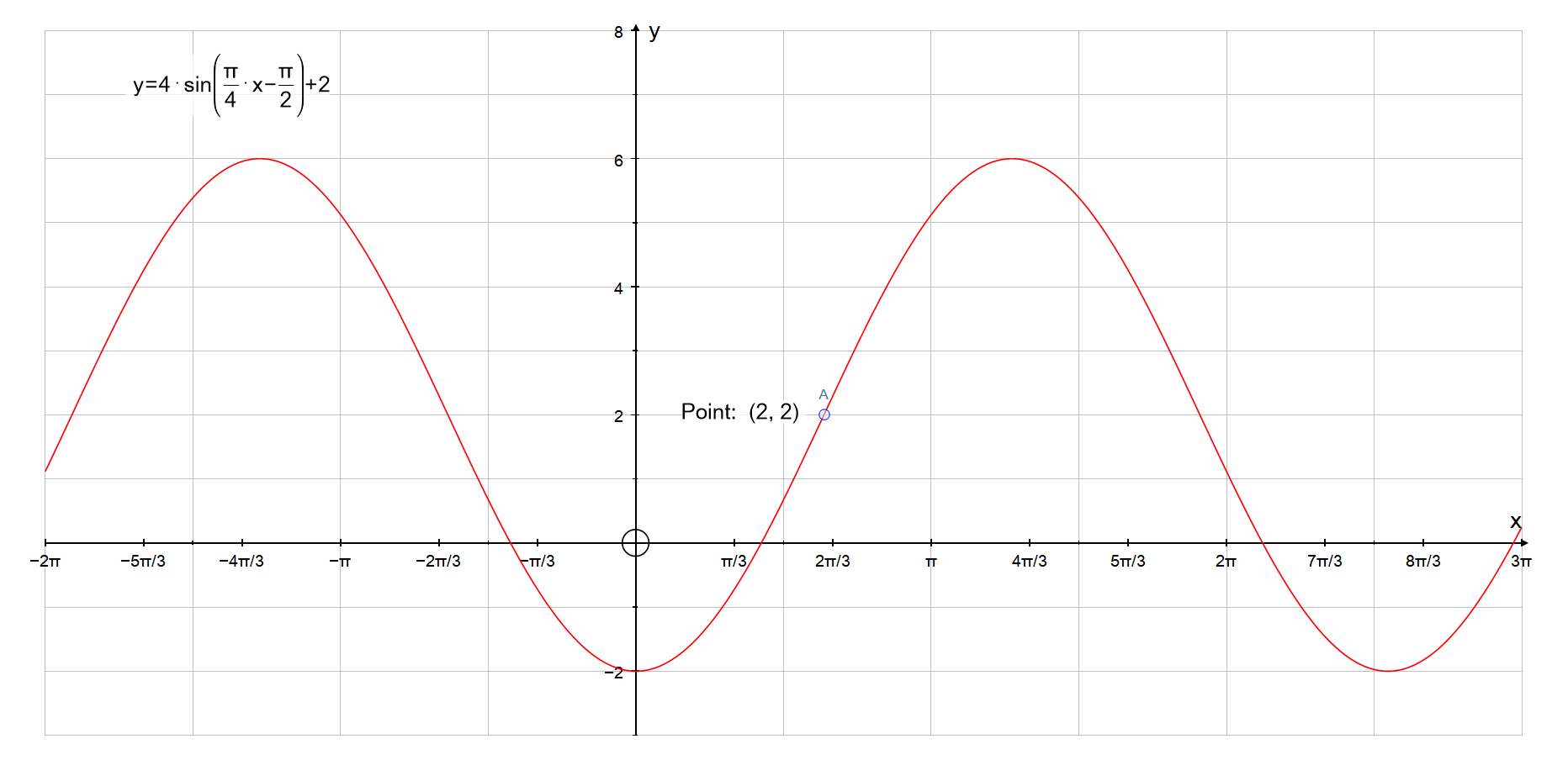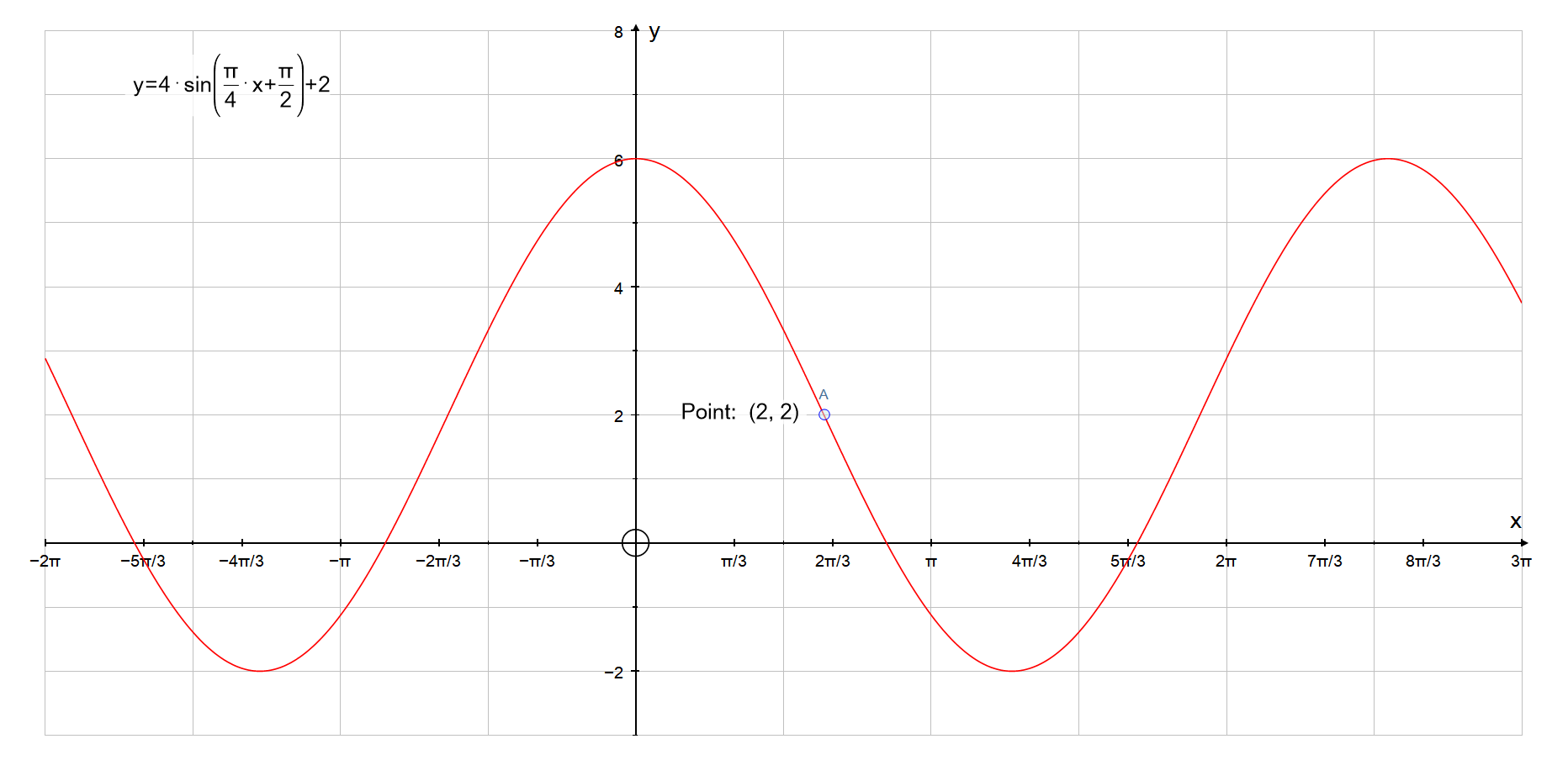For a sine function written in the form:
#y=asin(bx+c)+d#
We have:
#bbacolor(white)(88888)="Amplitude"#
#bb((2pi)/b)color(white)(888)="Period"#
#bb((-c)/b)color(white)(8.8)="Phase Shift"#
#bbd color(white)(88888)= "Vertical Shift"#
#y=Asin(nt+epsilon)+d#
We have a range of #[-2,6]#. The distance from the minimum value to the maximum value is #bb8#
#bb(y=sinx)# has distance of #bb2# from maximum to minimum, and an amplitude of #bb1#. We have a distance of #bb8# so our amplitude must be #bb4#
#A=4#
We are given a period of #bb8#
#:.#
#(2pi)/n=8=>color(blue)(n=pi/4)#
For:
#bb(y=4sinx)# The minimum value is #bb-4#, we have a minimum value of #bb-2#, so the graph has a vertical shift of #bb2# units in the positive y direction.
#:.#
#color(blue)(d=2)#
We now need to find #bbepsilon#:
We are given #bby=2# when #bbt=2#
#:.#
#2=4sin(pi/4(2)+epsilon)+2#
#->2=4sin(pi/2+epsilon)+2#
Subtracting #2# and dividing by #4#
#sin(pi/2+epsilon)=0#
#arcsin(sin(pi/2+epsilon))=arcsin(0)#
#pi/2 + epsilon =arcsin(0)#
#pi/2+epsilon = 0=>color(blue)(epsilon =-pi/2)#
#pi/2+epsilon= pi=>color(blue)(epsilon=pi/2)#
So we have two possible values for epsilon.
Answer:
#color(blue)(A = 4)#
#color(blue)(n = pi/4)#
#color(blue)(epsilon = -pi/2)# or #color(blue)(epsilon = pi/2)#
#color(blue)(d=4)#
Here are the two graphs with both values of epsilon. As you can see they both meet the given criteria:






